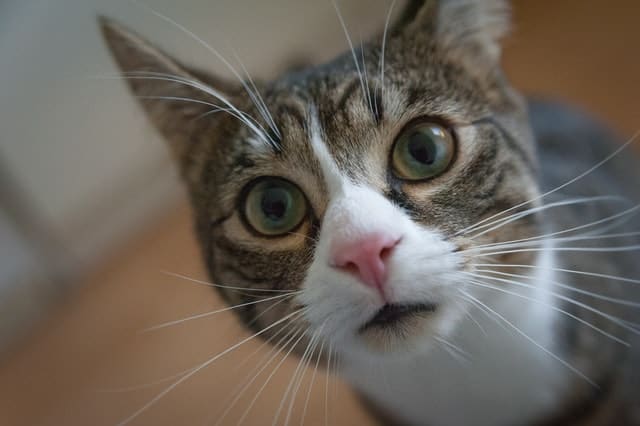
It is a very common vision problem among felines: here are the symptoms to recognize, the causes and how to treat uveitis in cats.
Anyone who has a cat at home knows how delicate their eyesight can be: one of the most frequent eye problems is the so-called uveitis. The article is not intended to be a scientific treatise on the pathology, but simply to give some indications to inexperienced owners to immediately recognize the symptoms and alert the expert in time. Recognizing it in time can make a difference and there is also more we can do to help our cat in need. Here are the signs to watch out for and how you can limit their effects.
Uvea and uveitis in cats: what it is
The first is the vascular lining of the eye, between the fibrous sclera and the retina. Its function is to nourish the eyeball with the production of aqueous humor, therefore it has both a vascular and protective function. Uveitis, on the other hand, is the inflammation of one of the parts that make up the eyeball, i.e. the iris and the ciliary body or choroid. This ophthalmological disorder usually affects stray cats, which are more prone to injuries and bruises than those living indoors. There are three types of uveitis, which we will see below.
- Iritis: inflammation of the iris, i.e. only of the anterior part, and iridocyclitis, i.e. of the anterior chamber and vitreous.
- Cyclitis: when the inflammation is at the level of the ciliary body, therefore intermediate.
- Choroiditis and Retinitis: When inflammation affects the back or choroid.
Symptoms
What are the first signs of a cat suffering from uveitis? We should be especially careful when observing our cat and subjecting him to a scrupulous visit to the vet. The most frequent symptoms of uveitis are:
- photophobia (hypersensitivity to light),
- red eyes
- constricted pupils (Miosis),
- excessive tearing,
- presence of eye secretions (mucus or pus),
- opacity of the pupil,
- difficulty walking (due to lowering of vision).
The most frequent consequences of a badly treated uveitis are often: cataracts in cats , retinal detachment, glaucoma up to permanent blindness. We observe the eyes of our cat: if they appear opaque or veiled, we are faced with the so-called ‘ Tyndall effect ‘: it is a pathology due to an accumulation of erythrocytes, leukocytes and proteins that opacify the eye. We may notice that these particles will reflect when subjected to direct light.
If you fear the risk of contagion, it is valid only when the cause of uveitis is a contagious infectious disease. If it is a systemic disease that has caused inflammation then there is a risk of contagion among felines; while if at the base there is Toxoplasmosis in the cat, the disease can be infected not only from cat to cat but also to humans.
Causes and treatment
The type of treatment that the expert will choose to adopt also depends on the cause. The reasons can be either external, therefore linked to traumas or injuries (called exogenous causes), or internal and therefore of a pathological nature (endogenous causes). The latter include: viral, bacteriological, parasitic infections, metabolic diseases, diabetes in cats, feline Toxoplasmosis, increased blood pressure, Feline FeLV or Leukemia , FIV and FIP and finally Feline Herpesvirus. Increased intraocular pressure can also cause uveitis, but also thrombosis and bleeding.
The treatment chosen by the vet is certainly linked to the cause of the uveitis that caused the inflammation. First, we will try to reduce the pain in the cat’s eyes with analgesics. If there are wounds, they must first be treated with antibiotic therapy and then eventually surgery will be considered, often necessary in cases of cancer. Initially, we try to reduce inflammation with locally applied substances (eg eye drops). In the case of systemic pathologies, on the other hand, the treatment takes place through immunosuppressive drugs.
Uveitis in cats: can it be cured?

Unfortunately, there is no good news about it: the prognosis of feline uveitis unfortunately does not give great satisfactory results, in fact only a percentage equal to 33% of the affected felines can recover. This happens because the drugs chosen for the therapy have side effects that create other complications for the cat’s health. If we think of corticosteroid drugs, they can aggravate systemic disease; anti-inflammatory drugs or NSAIDs, on the other hand, delay healing. But this does not mean that an early diagnosis by an attentive and scrupulous owner can improve the chances of recovery of the affected cat.






